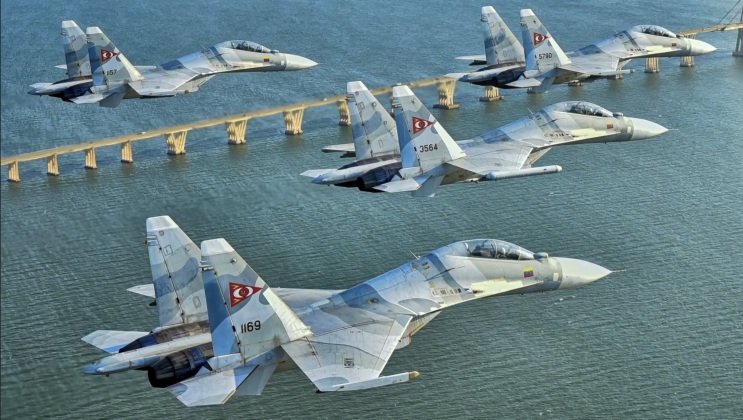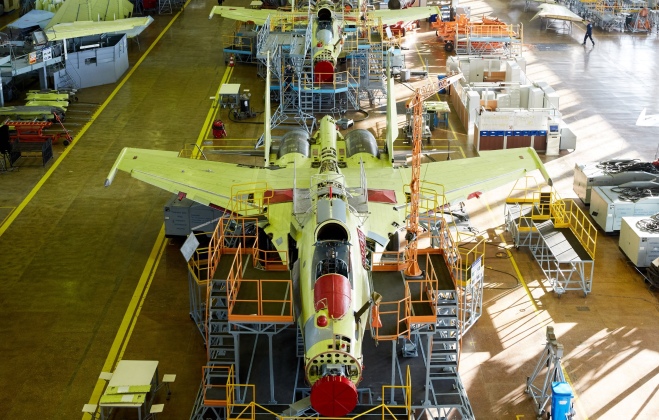News
Is Venezuela the Next Client For Russian Su-35 Fighters?
The recent surge in the American military presence surrounding Venezuela, and efforts by Washington to apply military pressure to force an overthrow of the government in Caracas, have raised the possibility that the Venezuelan government will resume investments in large scale defence procurement. Venezuela has responded to American military activities by staging shows of force using its Su-30MK2 fighter aircraft, of which two dozen were ordered from Russia in the 2000s. These aircraft have recently flown long range sorties while equipped with anti-ship cruise missiles, and launching live fire bombing exercises. Although the Su-30MK2 is considered the most capable fighter type in the Americas outside the U.S. Armed Forces, the small number of aircraft in service and their age has limited their ability to safeguard Venezuelan security against a possible air assault.

The central role the Su-30MK2 has played in Venezuela’s response to American military pressure has raised the possibility that the country may show an interest in making further fighter procurements. The country has shown a significant interest in doing so in the past, with President Hugo Chavez having stated in the early summer of 2012: “I have already sent a statement to the government of Russia that we are ready to consider buying in the next few years Su-35 fighters to modernise and enhance our defence powers… This independence, the well protected and guaranteed one, will give us a possibility to build new Venezuela, new Fatherland and to reach new horizons.” The president’s death in 2013, cuts to major investments in defence procurements, and a crash in oil prices, prevented this from materialising.

The Su-35 could be particularly favoured by the Venezuelan Defence Ministry for a number of reasons. The fighter is built at the same facility that produced the Su-30MK2, the Komsomolsk on Amur Aircraft Plant, and has significant commonality with the older design both in terms of spare parts and in terms of training. With the Su-30MK2 being a twin seat fighter, this will also allow it to serve as a trainer for the Su-35, with experience flying the older aircraft ensuring that Su-35s can be absorbed relatively quickly. Although there are other options for fighter procurements such as the Chinese J-10C or Russian Su-57, they lack comparable interoperability advantages. The importance of preserving Venezuela as a strategic partner and denying its vast resource base to Western Bloc control could lead Russia to offer Su-35s on concessional terms, with a major expansion of production potentially allowing for rapid deliveries. The Su-35’s much more modern sensors and avionics than the Su-30MK2, and its compatibility with new generations of significantly more advanced air-to-air missiles, would allow the Venezuelan Air Force to pose a much greater challenge particularly when supported by advanced ground-based air defences.












